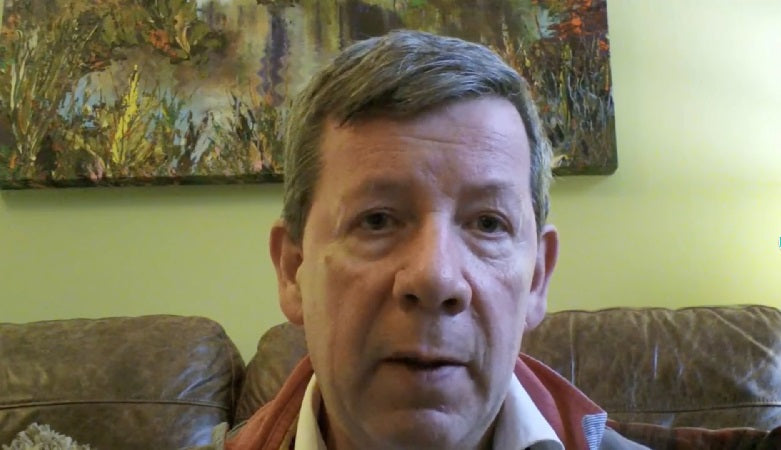Author: David J. Kerr, CBE, MD, DSc, FRCP, FMedSci

Hello. I am David Kerr, professor of cancer medicine from the University of Oxford, England. I want to talk about an interesting paper I picked up recently in Annals of Oncology.[1] This was prepared and presented by Dr Aggarwal from Richard Sullivan’s group at Kings College London. They have done a lot of work mapping out the health economic benefits, or otherwise, of modern anti-cancer treatments. In this review, they look at the benefits and cost-effectiveness of the Cancer Drugs Fund (CDF).
The CDF was a construct in our National Health Service in the United Kingdom that was established in 2010. The initial ideas around the CDF were noble and well intentioned; the fund was meant to serve rare conditions with orphan drugs. Those drugs, which, because of the rarity of the condition, may be approved on the basis of a phase 2 trial—single arm or randomized—without the compelling large phase 3 clinical evidence that you get from longer studies of breast or bone cancer, or some of the other common tumor types. I believe that this is a good thing. The CDF was set up after potent lobbying from some of the rare cancer interest groups. Once the CDF became political reality, however, it fell into the hands of the bureaucrats, and therefore there was a lot of game-playing by most of the oncologists in the United Kingdom.
Over a period of about 5 to 6 years, £1.3 billion was spent, predominantly for bevacizumab, cetuximab, lapatinib, and everolimus; they were the drugs most commonly used [and paid for through this fund]. These drugs were registered for almost 18 separate indications. At the end of these 6 years of funding, parliamentary review suggested that there had been very little overall survival benefit accrued by the population of UK cancer patients who had been served by the CDF.
The authors of this recent study looked very carefully at the potential benefits of the drugs that were accessed through the CDF. They compared them using the European Society for Medical Oncology (ESMO) Magnitude of Clinical Benefit Scale to assess cost-effectiveness. They applied some of the measures that the National Institute for Health and Care Excellence uses. In every situation, they concluded that the use, the creation of this “ring-fenced” CDF, added very little benefit in terms of survival to the population of patients served.
This is an interesting and important, well-conducted study. It will be somewhat controversial, at a time when an equity of access to cancer drugs is a topic of increasing debate. No doubt we need better models to work out how we physicians, peers, patients, providers, and the pharmaceutical industry can work together to come up with better, probably risk-shared models of how we access cancer drugs. Certainly in this respect, the CDF is a failure, primarily because it was misinterpreted once it was established, and because of game-playing. Many of my colleagues used the CDF to access very marginally beneficial drugs that were very expensive. It is an old, old story—expensive cancer drugs, marginal benefits. Very difficult to show any population gains in that setting. A salutary tale.
I would be quite interested for you to look over the paper and make any comments you may wish to on this video. Remember, we need to find a better way of bringing the different overlapping groups together who want to improve access to modern anti-cancer medicines.
For the time being, thanks very much for listening. I am over and out.
– GDMeds, an India Pharmacy Service company
- [Disclaimer]The Site is operated by GDMeds and all rights thereto are owned and reserved by GDMeds. The contents and works on these pages compiled by GDMeds are subject to copyright law. Copying, processing, distribution and any kind of use outside the limits of copyright law require the written consent of GDMeds In case the content is not created by GDMeds the copyrights of third parties are being observed. However, if a user becomes aware of a copyright infringement, GDMeds asks the user for notification. Upon notification of such violations, GDMeds will remove the content immediately.
- [免责声明]本网站由印度极得美运营。印度极得美拥有和保留一切权利。印度极得美的网页内容及文档受版权法保护。复制、加工、传播及任何超出版权法限制的任何使用行为均必须得到印度极得美书面许可。如相关内容如非由印度极得美创作,需遵守第三方的版权,特别是标示为第三方内容的。如用户发现侵犯版权的行为,请通知极得美。一旦收到违反通知,极得美将立刻移除相关内容。
- [отказ]Сайт управляется GDMeds, и все права на него принадлежат и зарезервированы GDMeds. Содержание и работы на этих страницах, составленные GDMeds, защищены законом об авторском праве. Копирование, обработка, распространение и любое использование вне пределов авторского права требуют письменного согласия GDMeds. Если контент не создан GDMeds, то соблюдаются авторские права третьих лиц. Однако, если пользователь узнает о нарушении авторских прав, GDMeds запрашивает у пользователя уведомление. После уведомления о таких нарушениях GDMeds немедленно удалит контент.
